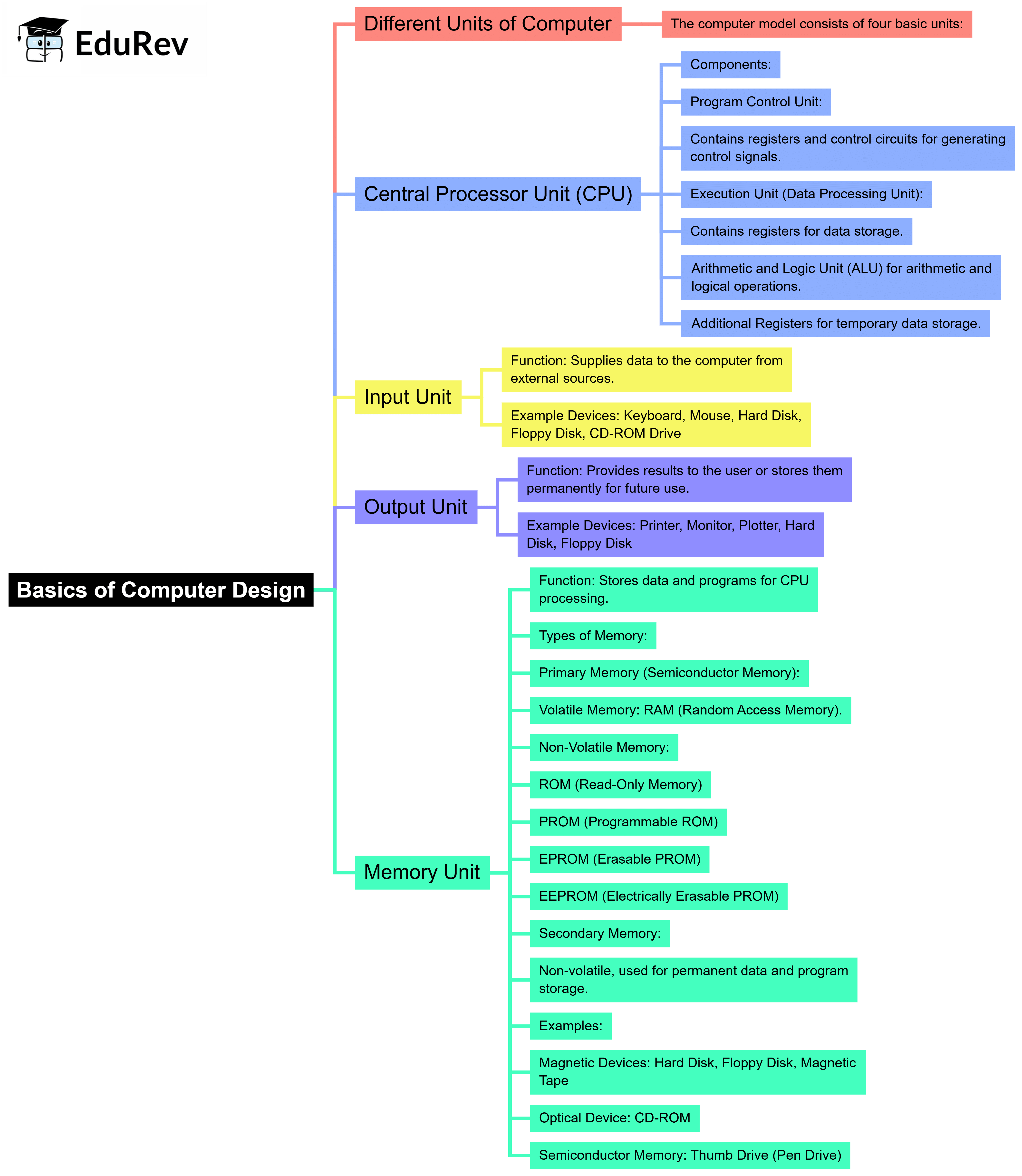Computer Science Engineering (CSE) Exam > Computer Science Engineering (CSE) Notes > Computer Architecture & Organisation (CAO) > Mind Map: Basics of Computer Design
Mind Map: Basics of Computer Design | Computer Architecture & Organisation (CAO) - Computer Science Engineering (CSE) PDF Download

The document Mind Map: Basics of Computer Design | Computer Architecture & Organisation (CAO) - Computer Science Engineering (CSE) is a part of the Computer Science Engineering (CSE) Course Computer Architecture & Organisation (CAO).
All you need of Computer Science Engineering (CSE) at this link: Computer Science Engineering (CSE)
|
20 videos|113 docs|48 tests
|
FAQs on Mind Map: Basics of Computer Design - Computer Architecture & Organisation (CAO) - Computer Science Engineering (CSE)
| 1. What are the fundamental components of computer design in computer science engineering? |  |
Ans.The fundamental components of computer design include the central processing unit (CPU), memory hierarchy (RAM, cache, and storage), input and output devices, and system interconnects. Each of these components plays a crucial role in determining the performance and efficiency of a computer system.
| 2. How does the CPU architecture impact computer performance? |  |
Ans.CPU architecture affects computer performance by determining how instructions are processed and executed. Factors such as clock speed, number of cores, instruction set architecture, and pipeline design can significantly influence the speed and efficiency of computations, multitasking, and overall system responsiveness.
| 3. What is the significance of memory hierarchy in computer design? |  |
Ans.Memory hierarchy is significant in computer design because it optimizes the speed and efficiency of data storage and retrieval. By organizing memory into levels (registers, cache, RAM, and disk storage), systems can balance the cost and speed of different types of memory, enabling faster access to frequently used data while managing larger datasets effectively.
| 4. What are the different types of input and output devices used in computer systems? |  |
Ans.Different types of input devices include keyboards, mice, scanners, and microphones, while output devices include monitors, printers, and speakers. Each device serves a specific function in enabling user interaction with the computer, contributing to the overall user experience and system usability.
| 5. How do system interconnects affect the performance of a computer? |  |
Ans.System interconnects, such as buses and networks, affect computer performance by determining how efficiently data is transferred between components. The bandwidth, latency, and design of these interconnects can significantly impact the speed of communication within the system, influencing performance in tasks that require high data throughput.
|
20 videos|113 docs|48 tests
|
Download as PDF

|
Explore Courses for Computer Science Engineering (CSE) exam
|

|
Related Searches














